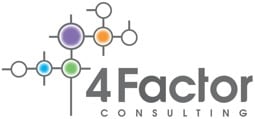I’ve just spent an interesting two days at the 10th annual Platts Nuclear conference. Once again, I met with old friends and colleagues, as well as some new folks in the nuclear industry. We are a small industry, but there are so many interesting things going on.
The conference theme was “Opportunities for Growth and Investment” and we spent a great deal of time learning about both the US and the international market.
The opening session on Tuesday was chaired by the inimitable Donald Hoffman, president of Excel Services and current president of the American Nuclear Society. Don’s energy and enthusiasm for this industry is infectious. As he’s done for the past several years, he reminded everyone in the room that they should be members of the American Nuclear Society and should be active in working with the society to help get the important message about our industry out to policy makers and everyone else in the world.
The first plenary speaker was Dr. Peter Lyons, Assistant Secretary for Nuclear Energy. Dr. Lyons provided a fairly typical overview of DOE’s activities in nuclear technology. During the Q&A, he reminded me of something I’ve been reminding people about. Many decisions that affect nuclear power are actually taken at the state level and the federal government has only limited influence on those issues. We, as an industry, need to pay attention to LOCAL politics as well as federal level. The old adage, “All politics are local” is most certainly true.
Next up was Dr. Allison MacFarlane, current chairman of the US Nuclear Regulatory Commission. Dr. MacFarlane provided no real new insights into the NRCs thinking or direction. Of course, the commissioners usually reserve those comments for their own spring event, the NRCs Regulatory Information Conference (RIC) in early March. She did talk about the NRCs efforts to mold and guide regulators around the world. I find frustrating that US industry is not encouraged to help teach INDUSTRY in these developing countries how they should be thinking and behaving as well. If the industry side of that relationship does not understand what is expected, there are significantly more issues and much more likelihood of a failure in the regulatory oversight process. These expectations are frequently more cultural, than regulation driven. For example, if workers feel unable or unwilling to report issues, or find fault with work done by their peers, verification processes fail. Yet, in many cultures, it is deeply impolite to imply that someone has made an error. These cultural norms take more than a good regulator to overcome. The US industry can help other companies understand and comply with these concepts in parallel to the work being done by the NRC. High time the NRC acknowledged that, and encouraged more participation.
The final speaker before the break was Christofer Mowry, president and CEO of mPower, B&Ws SMR program. Chris MOSTLY avoided being an advertisement for the mPower design, talking about the market landscape for SMRs and debunking some common SMR myths. I have to take exception to Mr. Mowry’s argument that SMRs can load follow and pair with wind and solar just as well as methane. There are some fundamental cost profile differences that make that economically unreasonable. While the smaller SMR is PHYSICALLY more nimble and able to load follow more easily, the fact that SMRs are still a high capital cost proposition make SMRs a poor choice to pair with renewables, unless there is a sea change in Washington regarding a price on carbon emissions that changes the cost profile for methane based electricity.
SMRs are still a great choice for replacing older, dirtier coal plants and some innovations to allow them to be “black start” facilities on the grid make them even more appealing as replacement for coal facilities.
There were two more speakers after the break discussing new build in the United States, but I had an appointment and had to leave. Stay tuned as I will be talking about Wednesday afternoon and Thursday morning in my next blog (or two).

1 thought on “Report from 10th annual Platts Nuclear Conference”
Comments are closed.